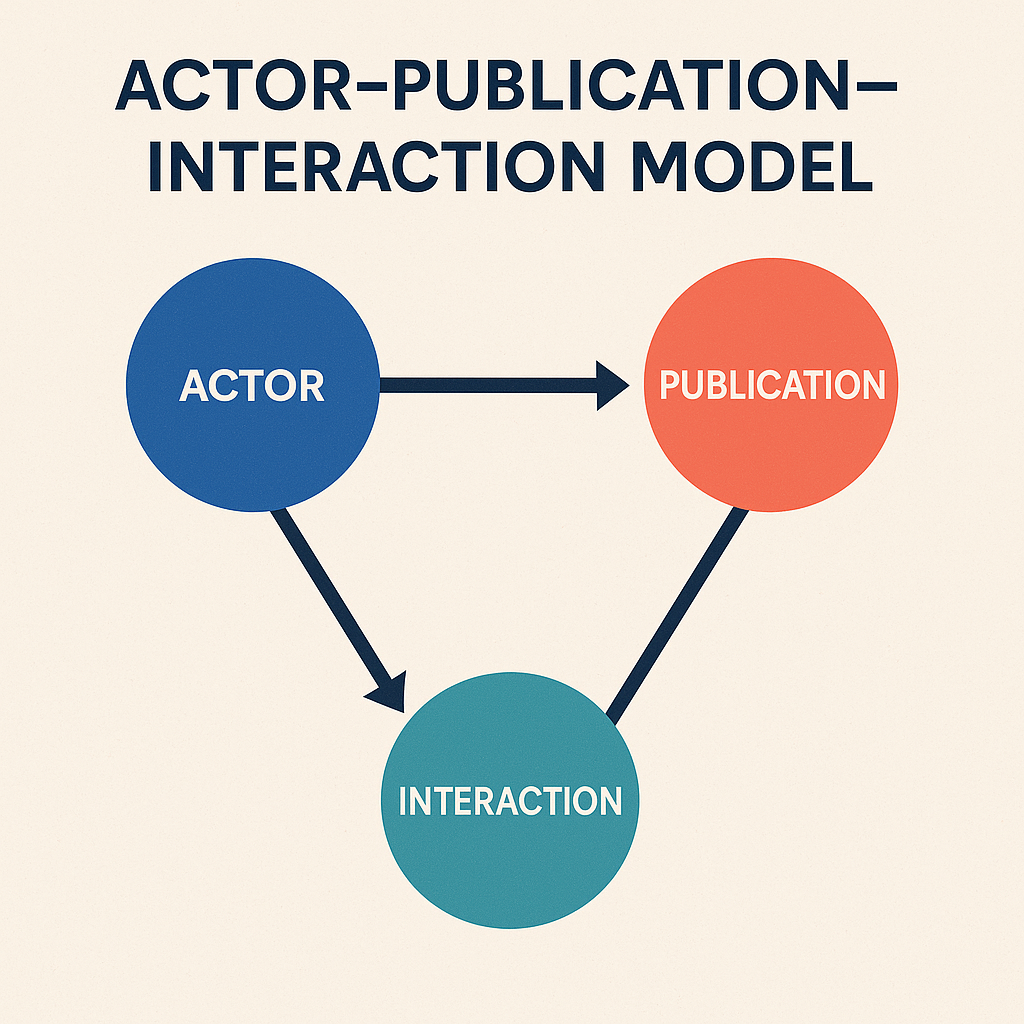The Unified Social Media Data Model Powered by the Actor–Publication–Interaction Framework
One API.
Every Network.
Total Insight.

Unified Social Media API & Data Model
Our platform offers a powerful Unified Social Media API built on the widely recognized Actor–Publication–Interaction (API) specification, enabling seamless integration across major social media platforms. By standardizing data from Facebook, X (formerly Twitter), Twitch, Github, Instagram, TikTok, Pinterest, LinkedIn (limited support), Reddit, YouTube, and even Newsletters, our ETL pipeline brings consistency and structure to the otherwise fragmented landscape of social media data.
With support for popular CMS platforms like Wagtail, Cloutlayer, WordPress, and Ghost, the system allows effortless ingestion and fusion of content from websites and newsletters as well. Whether you're building analytics dashboards, automating content workflows, or enriching customer profiles, this unified model empowers developers and data teams to extract, transform, and load social engagement data with confidence and clarity.

Actor–Publication–Interaction Model
Our unified ETL system is structured around the robust Actor–Publication–Interaction model, enabling precise and consistent representation of social media activity across platforms.
Actor refers to any identifiable entity that creates or engages with content. This includes YouTube channels and users, Facebook profiles and pages, X (formerly Twitter) profiles, Instagram users, LinkedIn profiles and pages, Reddit users, newsletter authors, and website contributors. By abstracting each platform-specific identity into a common actor type, we ensure traceability and consistency in user and entity behavior across networks.
Publication represents any form of content created or shared by an actor. This includes YouTube videos and community posts, Facebook posts, X tweets and quote tweets, Instagram posts and stories, LinkedIn posts and articles, Reddit posts and crossposts, as well as newsletters and website articles. Every piece of content is normalized under the Publication model, allowing unified analysis regardless of platform origin.
Interaction captures the ways actors engage with publications—whether their own or others’. This includes likes, reactions (e.g., Facebook or LinkedIn emojis), shares, retweets, quote tweets, comments, replies, upvotes, and reposts. Each interaction is mapped back to both the actor who performed it and the publication (and actor) it was directed toward, creating a rich graph of social dynamics.
This structured, platform-agnostic approach enables powerful analytics, streamlined integrations, and scalable content operations across the social web.